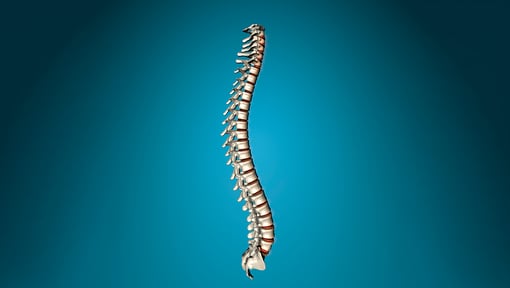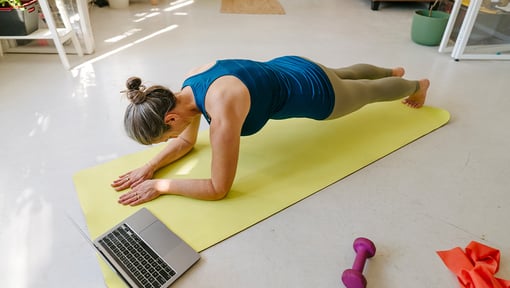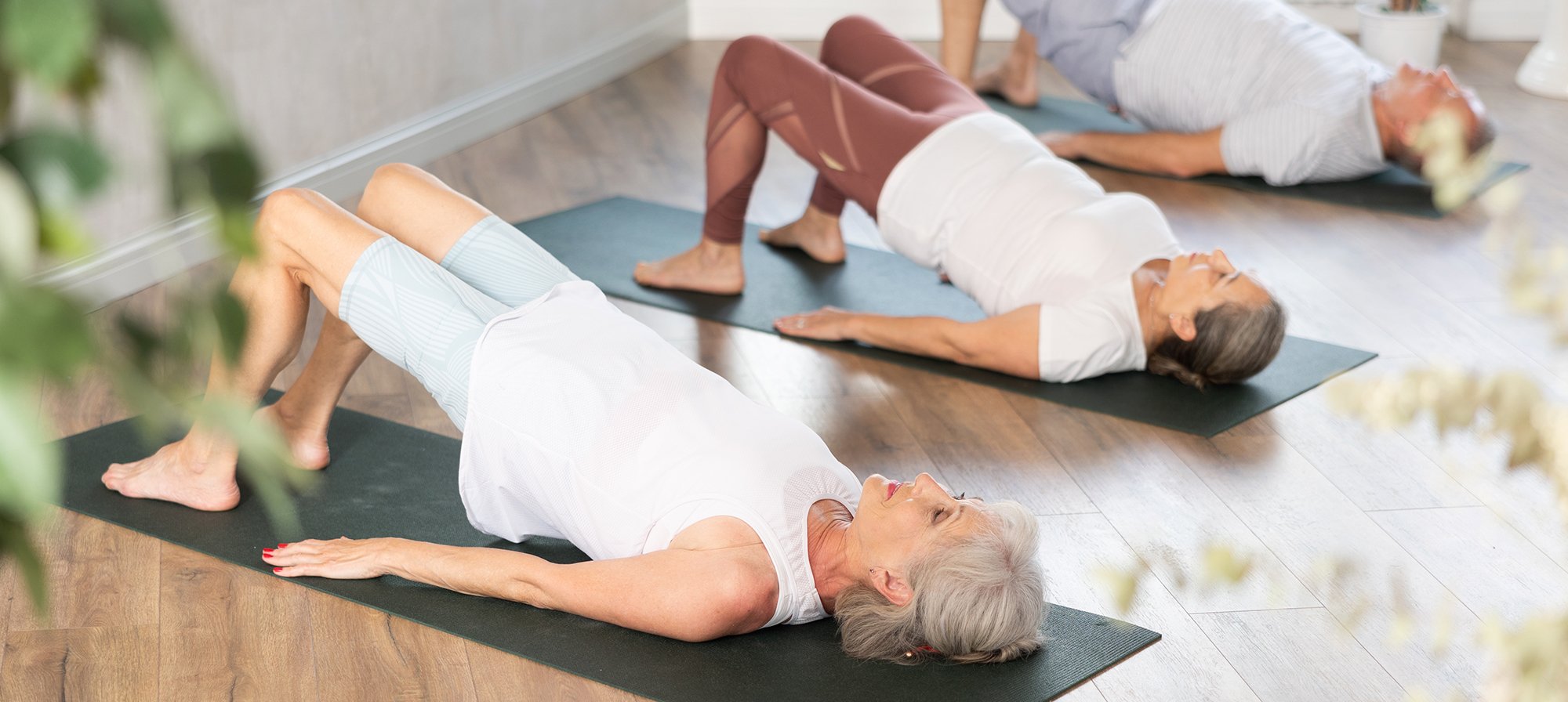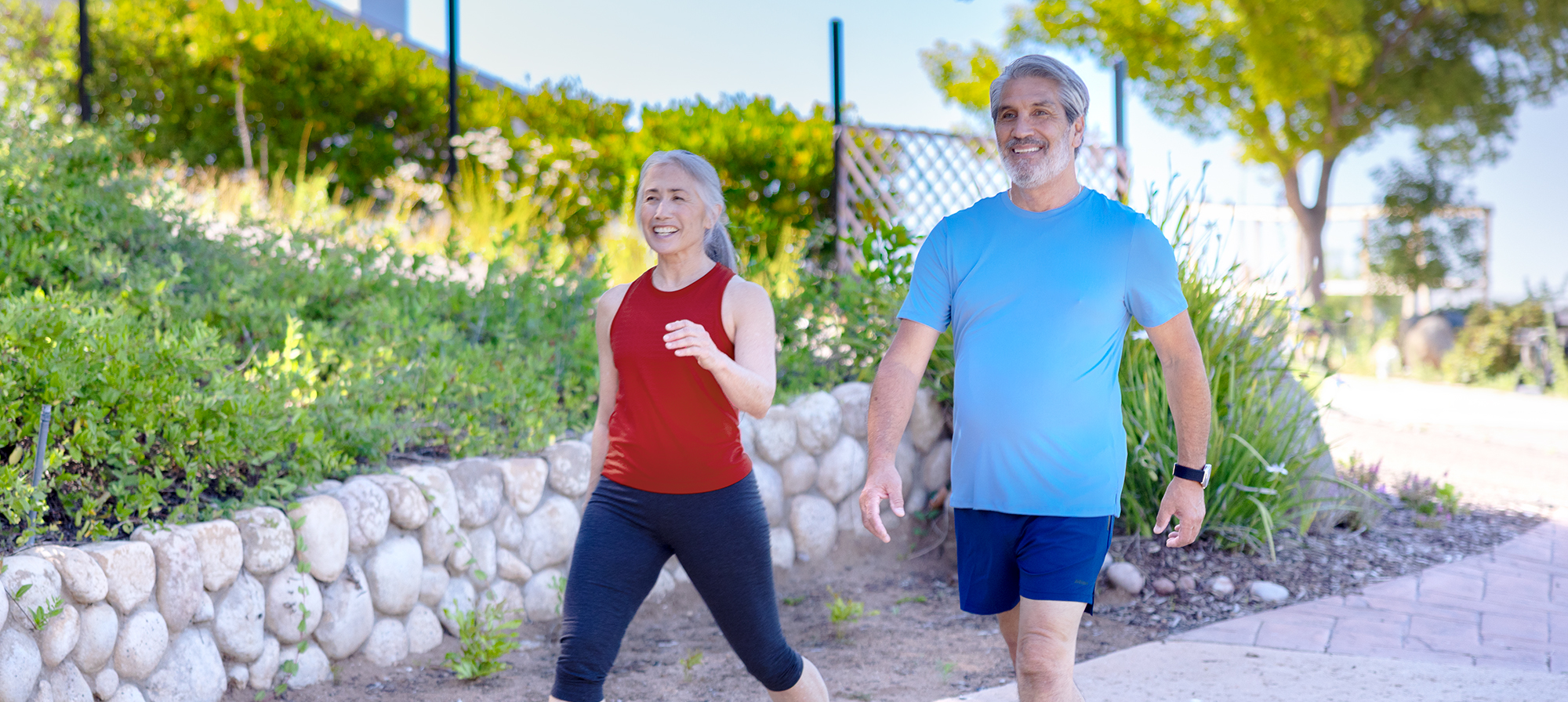Back pain may be more common with age, but it’s not inevitable. One way to keep it at bay? Do exercises that help keep your core strong and stable.
Keeping your back healthy and free from pain and injury takes more than good posture and using your legs to safely lift heavy objects. Working the muscles that keep your spine strong, stable, and mobile is key. And that entails weaving the right kinds of exercises into your fitness routine.
If you build a strong and stable core, you’ll do more than prevent or manage pain. Simply put, the core includes all of the muscles between the shoulders and hips. A strong core helps support the three natural curves of the spine. This provides several benefits for spine health.
You’ll build endurance. You can clean out the garage, pull weeds, cook, or even maintain good posture without your back tiring out too quickly.
With a strong, stable core, exercise, sports, and daily activities are safer and easier to do. If you already have back pain, the right kinds of exercises can help lessen that pain and help prevent flare ups.
So, which kinds of exercises are best for back health? To start, it helps to focus on exercises that strengthen and stabilize your core and help support the natural curves of your spine.

A healthy spine is a spine with curves
Understanding the structure of your back before you begin an exercise routine is essential. A healthy spine, with healthy posture, has 3 natural curves. These slight curves are normal and support your back while also allowing you to move and bend. They help ensure that no one area of your back or spine is overly strained.
Maintaining the natural curve in your lower back, no matter the activity, is called “neutral spine.” It is the strongest and most stable position for your spine to be in. But if your spine is too straight, or too curved, it can cause stress or pain in your low back.
Practicing good posture is one way to help keep the natural curves of your spine in place. But doing the right kinds of exercises can help support these spinal curves, as well. This includes exercises that help you build a strong core. A strong core helps support the three natural curves of the spine and provides several benefits for spine health.

A strong core = a healthier back
Think of your core as your body’s trunk. More than just your abs, your core is made up of several groups of muscles in your back, belly, sides, and hips. A strong core helps maintain your spine’s natural curves. This in turn helps maintain good posture.
When it comes to building a healthy back, it’s crucial to focus on strengthening the muscles of your core, rather than only your back.

Exercise videos to help build a strong core
The links below take you to a series of videos with stabilization exercises for your core. But before you begin doing these or any other exercises, check with your doctor. Keep these tips in mind as you do each one:
- Grab a yoga mat.
- Be sure to breathe throughout each exercise.
- Stop the exercises if you feel sharp pain or pain that doesn’t go away.
- Follow the specific, step-by-step instructions and demonstrations provided in each video.
1. Standing neutral spine exercise
This exercise helps you find your neutral spine, which in turn helps support healthy posture during your daily activities. You can practice this exercise throughout the day as needed.
This is the foundation of all core exercises. Be sure you have this movement mastered before moving on to other core exercises. This can help lower your risk of injury. Do 3 sets of 10 reps, holding each rep for 10 seconds.
3. Bridging
This exercise helps strengthen your core and hip area. Do 3 sets of 10 reps.
4. All 4’s, arm/leg lift (aka, “bird dog”)
This exercise can strengthen your entire core, especially the muscles that keep your posture in check during all activities and movements. Do 3 sets of 10 reps each.
This exercise challenges you from your shoulders to your toes, working every muscle along the way. If this is too easy, start on your toes instead of your knees. Do 3-5 reps, holding each set for 30 seconds.
6. Side plank, modified, knees
This exercise pays particular attention to the side of your body and muscles of your hips, while also benefiting your whole body. If this is too easy, start on your toes rather than your knees. Do 3-5 reps, holding each set for 30 seconds.
This exercise improves mobility of the entire spine and the muscles that surround it. If you have osteoporosis, do not do the rounding or “cat” part of this exercise. Do 3 sets of 10 reps.
This exercise can help to increase your spinal extension (bending your spine slightly backwards). If you do a lot of sitting, this helps move your spine in the other direction. Do not do this exercise if it causes pain. Do 3 sets of 10 reps, holding each rep for 10 seconds.
9. Kneeling hip flexor stretch
You should feel a stretch in the front part of your thigh as you shift your weight forward. Place a small pillow under your knee. Do 3 sets on each side, holding each set for 30 seconds.
Make a commitment to a healthy back
It’s easy to take your spine and support system for granted. But including these exercises into your workout routine every week ensures a strong and stable core. This can help you maintain mobility and balance, stave off back pain, and protect your spine from injury. That can go a long way toward helping you stay strong and healthy for years to come.
If you loved these core strengthening exercises, check out these 9 exercise videos to help strengthen your feet and ankles.
Not a Silver&Fit® member? Learn more about everything the program has to offer, including more instructional videos like these, here on our website.
This information is not intended to take the place of regular medical care or advice. Please check with your doctor before using this information or beginning any self-care program. Images used for this article do not depict any members of the Silver&Fit Program.
References
Cleveland Clinic. (2021, August 6). Poor posture hurts your health more than you realize: Tips for fixing it. https://my.clevelandclinic.org/health/diseases_conditions/hic_Posture_for_a_Healthy_Back
Cleveland Clinic. (2020, May 29). Why a strong core can help reduce low back pain. https://health.clevelandclinic.org/strong-core-best-guard-back-pain/
Fernández-Rodríguez, R., Álvarez-Bueno, C., Cavero-Redondo, I., Torres-Costoso, A., Pozuelo-Carrascosa, D. P., Reina-Gutiérrez, S., Pascual-Morena, C., & Martínez-Vizcaíno, V. (2022). Best exercise options for reducing pain and disability in adults with chronic low back pain: Pilates, strength, core-based, and mind-body. A network meta-analysis. Journal of Orthopaedic & Sports Physical Therapy, 52(8), 505–521. https://doi.org/10.2519/jospt.2022.10671
Foster, N. E., Anema, J. R., Cherkin, D., Chou, R., Cohen, S. P., Gross, D. P., Ferreira, P. H., Fritz, J. M., Koes, B. W., Peul, W., Turner, J. A., Maher, C. G., Buchbinder, R., Hartvigsen, J., Cherkin, D., Foster, N. E., Maher, C. G., Underwood, M., van Tulder, M., … Woolf, A. (2018). Prevention and treatment of low back pain: Evidence, challenges, and promising directions. The Lancet, 391(10137), 2368–2383. https://doi.org/10.1016/s0140-6736(18)30489-6
George, S. Z., Fritz, J. M., Silfies, S. P., Schneider, M. J., Beneciuk, J. M., Lentz, T. A., Gilliam, J. R., Hendren, S., & Norman, K. S. (2021). Interventions for the management of acute and chronic low back pain: Revision 2021. Journal of Orthopaedic & Sports Physical Therapy, 51(11). https://doi.org/10.2519/jospt.2021.0304
Grooten, W. J., Boström, C., Dedering, Å., Halvorsen, M., Kuster, R. P., Nilsson-Wikmar, L., Olsson, C. B., Rovner, G., Tseli, E., & Rasmussen-Barr, E. (2022). Summarizing the effects of different exercise types in chronic low back pain – a systematic review of Systematic Reviews. BMC Musculoskeletal Disorders, 23(1). https://doi.org/10.1186/s12891-022-05722-x
Hayden, J. A., Cartwright, J., van Tulder, M. W., & Malmivaara, A. (2012). Exercise therapy for chronic low back pain. Cochrane Database of Systematic Reviews. https://doi.org/10.1002/14651858.cd009790
Kisner, C., Borstad, J., & Colby, L.A. (2023). Therapeutic exercise: Foundations and techniques (8th ed.). Philadelphia: F. A. Davis Company.
Kubosch, D., Vicari, M., Siller, A., Strohm, P. C., Kubosch, E. J., Knoller, S., Hennig, J., Sudkamp, M. P., Izadpanah, K. (2015). The lumbar spine as a dynamic structure depicted in upright MRI. Medicine, 94(32): e1299.
Mayo Clinic. (2023). Slide show: Prevent back pain with good posture. https://www.mayoclinic.org/healthy-lifestyle/adult-health/multimedia/back-pain/sls-20076817
MedlinePlus. (2021, July 28). Lifting and bending the right way. http://www.nlm.nih.gov/medlineplus/ency/patientinstructions/000414.htm
This article was written by Gail Olson, edited by Kimberley Reynolds, and clinically reviewed by Jaynie Bjornaraa PhD, MPH, PT, SCS, LAT, ATC, CSCS, CSPS.





